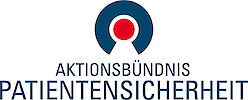arteriosclerosis
Are you looking for a clinic or a specialist for the treatment of arteriosclerosis or information on causes, therapy and prognosis? Here you will find experienced specialists and centers in your field and information on arteriosclerosis. The university hospital of Bonn one of the best university hospital in Germany always consult a healthcare professional for personalized advice and treatment options.
Information on arteriosclerosis
What is arteriosclerosis?
The terms atherosclerosis and arteriosclerosis are usually used synonymously. Arteriosclerosis is actually defined as hardening of the walls of arteries, regardless of the cause. The most common form, atherosclerosis, which is discussed in this article, is a chronic disease of the arteries caused by the formation of deposits (plaques) on the vessel walls. The plaques can consist of blood fats, connective tissue, thrombi and, to a lesser extent, calcium. This fact gave the disease the popular name "hardening of the arteries".
As plaques form, the arterial walls lose their elasticity and become thicker. Blood flow is made more difficult. As the disease progresses, this leads to circulatory problems and the formation of thrombi (clots of blood platelets). Arteriosclerosis can in principle affect all arteries in the body, but most commonly it affects the neck, heart, pelvis and leg arteries.
Arteriosclerosis is a widespread disease, particularly in countries in the global West.
What are the risk factors for arteriosclerosis?
The main risk factors for arteriosclerosis are the following:
- High blood pressure
- Obesity
- Diabetes mellitus
- High cholesterol
- Smoking
In this context, people often talk about the so-called metabolic syndrome, which can significantly promote the development of arteriosclerosis. It is a combination of various diseases that is associated with a significantly increased risk of heart and vascular diseases. These include high blood fat levels, high blood pressure, trunk-based obesity (overweight) and type 2 diabetes mellitus.
Other risk factors such as stress, lack of exercise, genetic predisposition, chronic inflammation, kidney failure, alcohol consumption or male gender play a role, especially when many of them are present in combination.
Causes: How does arteriosclerosis develop?
The exact mechanism by which arteriosclerosis develops has not yet been fully researched.
It is assumed that the innermost layer of the vessel wall, the endothelium, is initially damaged or dysfunctional. This occurs, for example, due to increased hemodynamic stress caused by long-term high blood pressure, but also due to toxins, e.g. exogenous when smoking, or endogenous due to an increased level of certain forms of cholesterol-laden transport proteins. Chronic inflammatory processes, for example in the context of a rheumatic disease, can also damage the cells of the endothelium.
The local damage leads to an inflammatory reaction with increased permeability of the endothelium. Immune cells are attracted and migrate into the vessel wall, where they phagocytose (“eat”) the toxic forms of cholesterol. As a result, these immune cells become so-called foam cells overloaded with fat, which die and thereby intensify the inflammatory reaction. In the process, calcium is released, which leads to calcification and hardens the plaque.
The inflammation also causes a fibrous cap to form on the resulting plaque. If this cap tears at some point, this leads to the accumulation of blood platelets (thrombocytes). These cells are part of the natural wound healing process and normally serve to close a bleeding wound. When a blood clot forms in the vessel, it can be completely closed or parts of it can break off and block vessels in other locations. The result is vascular occlusions, which lead to a reduced supply of blood and nutrients to tissue. In medical terms, these are also called heart attacks.
Arteriosclerosis symptoms
Arteriosclerosis usually progresses slowly and is symptom-free in the early stages. The first symptoms only appear in the advanced stage. Depending on which vessels are affected, different symptoms can occur.
Coronary heart disease occurs when the coronary arteries become narrowed. This can manifest itself in the form of so-called angina attacks, where patients feel a painful tightness in the chest. This condition causes a strong oppressive feeling in those affected and should always be treated as quickly as possible.
If the carotid artery is affected, there is a risk of a stroke. If leg or pelvic arteries are affected, peripheral arterial occlusive disease (PAOD) with severe muscle pain can occur. Erectile dysfunction can also be a sign of arteriosclerosis.
One feared consequence of arteriosclerosis is an aneurysm. This is the term for a bulge in the vessel wall, which makes it thin and unstable. The aneurysm develops slowly. As the diameter increases, the risk of a sudden rupture and severe bleeding also increases. This is a medical emergency in any case.
What secondary diseases can arise from arteriosclerosis?
Arteriosclerosis is one of the most important diseases in Western societies because it is the most common cause of cardiovascular disease, which in turn is the main cause of death. This includes various diseases of the cardiovascular system in which arteriosclerosis manifests itself in various organs.
Coronary heart disease
Coronary heart disease, or CHD for short, is caused by arteriosclerotic changes in the coronary arteries. Since these are responsible for the blood flow and supply of the heart muscle cells, sufficient blood flow is essential for the heart to function. In its worst form, CHD can lead to a heart attack and should therefore be treated as soon as possible.
Peripheral arterial occlusive disease
In the area of the arteries located away from the trunk, arteriosclerosis can lead to the development of peripheral arterial occlusive disease (PAD). This is particularly common in the area of the pelvic and leg arteries. Those affected experience pain in the muscles, especially after prolonged exertion, because these can no longer be adequately supplied. Since standing still for a short time relieves the symptoms, PAD is also colloquially known as "window shopping disease".
Diseases of the brain arteries
If the vessels of the brain are affected by arteriosclerosis, this can lead to an acute stroke. This causes a cerebral artery to become blocked, so that the corresponding supply area of the vessel is cut off from the supply of oxygen. This results in damage to the nerve cells and the destruction of the tissue.
If there are more chronic arteriosclerotic changes in the brain vessels, this can manifest itself in the form of dementia. Cognitive functions are gradually restricted, depending on the location, this can include memory and concentration problems or personality changes.
Other possible secondary diseases of arteriosclerosis are renal artery stenosis, which can lead to greatly increased blood pressure and reduced kidney function, and chronic mesenteric ischemia, which affects the vessels in the abdominal cavity. This disease can, for example, lead to certain forms of inflammation of the large intestine (colitis).
Diagnosis: How is arteriosclerosis diagnosed?
The first indications of arteriosclerosis are provided by a simple anamnesis (patient interview) combined with a physical examination. Blood sugar and cholesterol levels are also determined. Further diagnostic measures are linked to the location of the disease.
If the carotid artery is affected, it is examined using Doppler sonography (ultrasound examination). This examination method makes it possible to show the blood flow through a vessel, which can also detect relevant narrowing of the vessel diameter.
A common diagnostic method for coronary heart disease is echocardiography, an ultrasound examination of the heart. A stress electrocardiogram can also be performed. This shows the electrical activity of the heart while the patient is subjected to physical exertion, often sitting on a special bicycle, the ergometer. In this way, conclusions can be drawn about the blood supply and functioning of the heart under stress.
If there are signs of arteriosclerosis of the renal arteries, the kidney function is checked and blood and urine tests are carried out. Doppler sonography is also very suitable for examining the blood flow in the renal arteries.
For certain findings, angiography (X-ray examination of the vessels) and intracoronary ultrasound (ultrasound examination of the inner walls of coronary vessels) can also be used.
The information obtained in the diagnostics is used to estimate the risk of a cardiovascular event, for example an acute vascular occlusion. Based on this risk assessment, appropriate therapy is initiated.
What therapy and treatment options are there for arteriosclerosis?
The treatment of arteriosclerosis is intended to prevent the development of secondary diseases and serious events such as heart attacks or strokes. Although adequate treatment cannot usually cure the arteriosclerotic transformation of the vessels, the progression of the disease can be slowed down or even stopped.
In many cases, a change in lifestyle and drug therapy are enough to have a positive effect on the course of the disease. In the early stages, the plaques can even regress.
A healthy lifestyle is particularly important. Lots of exercise, a healthy diet, and avoiding risk factors such as smoking and being overweight produce very good treatment results. It is particularly important to include patients without symptoms but who do have risk factors.
Drugs for treating arteriosclerosis include drugs to lower blood pressure and cholesterol levels, as well as blood-thinning drugs. In addition, pre-existing conditions that can negatively affect the course of the disease, such as diabetes, should be treated as best as possible.
Surgical interventions by specialists in vascular surgery are usually used in the advanced stages or in life-threatening conditions. These include balloon dilation of narrow areas, stent implantation, bypass surgery and carotid artery surgery.
Who covers the costs of treatment for arteriosclerosis?
Care and advice for patients with arteriosclerosis, as well as treatment of cardiovascular secondary diseases, are part of the health insurance companies' service catalogue, so the costs are covered by them. This also includes, for example, hospital treatment for acute events.
The statutory health insurance companies have also launched so-called disease management programs, or DMPs for short. These include the care and training of patients with certain diseases with the aim of improving the way they deal with the disease and minimizing the risk of secondary diseases. The DMPs for coronary heart disease and type 2 diabetes also include many patients with arteriosclerosis and thus make a significant contribution to prevention.
The costs for special prevention and treatment such as nutritional advice or smoking cessation programs are not always covered by the health insurance companies, so patients have to pay for them themselves. It is advisable to ask the respective health insurance company which services are covered in each case.
Prevention: How can arteriosclerosis be prevented?
As with any disease, prevention consists in avoiding risk factors that can be influenced. In the case of arteriosclerosis, it plays a particularly important role, as most of the main risk factors can be influenced.
By not smoking and keeping your body weight within the normal range, the risk of arteriosclerosis can be significantly reduced. In addition to genetic and other non-influenceable factors, lifestyle also plays a major role in the development of high blood pressure, diabetes mellitus and hypercholesterolemia. This includes avoiding stress, a healthy and balanced diet and physical exercise.
What is the life expectancy with arteriosclerosis?
Arteriosclerosis is the most common cause of death in Germany. The prognosis depends very much on how far the disease has progressed.
In the case of manifest coronary heart disease, i.e. arteriosclerosis of the vessels that supply the heart muscle, the annual risk of death is 5%. In the case of peripheral arterial occlusive disease, in which arteriosclerosis particularly affects the leg vessels, the risk of dying within 5 years is 19% for asymptomatic patients and as high as 24% for symptomatic patients. Since simply avoiding risk factors can lead to a significant improvement, it is particularly important to change your lifestyle as early as possible.
If the first symptoms of the disease have already appeared, it is urgently necessary to see a doctor.
Which clinics and doctors are specialists in arteriosclerosis?
The treatment of arteriosclerosis usually falls within the field of angiology (vascular medicine), which in turn is a sub-field of internal medicine, so specialists in these fields are the most competent people to contact. Depending on the location of the arteriosclerosis and the presence of secondary diseases, it is advisable to receive treatment from specialists from other departments such as cardiology, neurology or nephrology (kidney medicine).
Since the treatment of arteriosclerosis plays a very important role in the prevention of potentially very serious cardiovascular diseases, treatment should always be carried out by experienced specialists. Since finding a suitable practitioner can be a great challenge, we would like to support patients in this process.
















